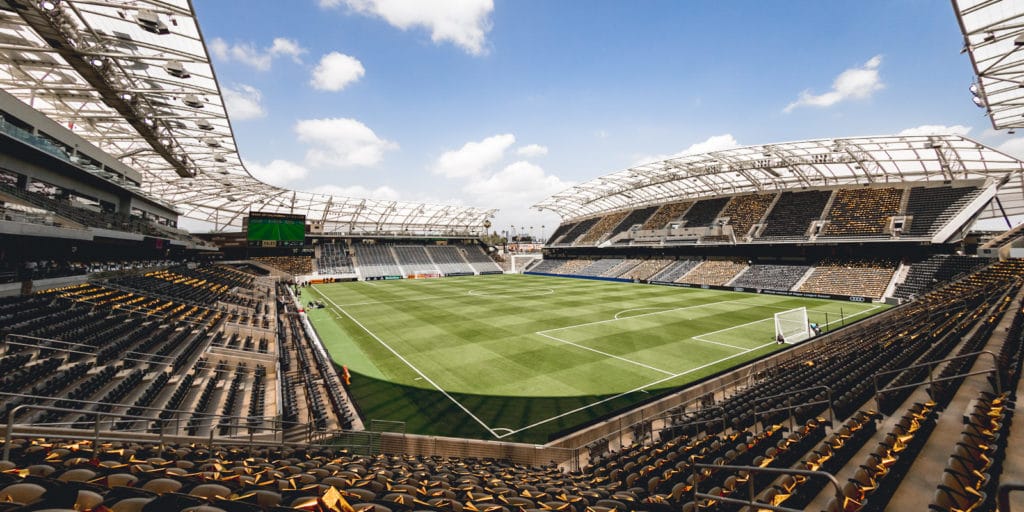Banc of California Stadium: Guide to the Home of Los Angeles FC
Los Angeles FC is an American professional soccer club that plays its home matches at Banc of California Stadium, a soccer-specific stadium located in Los Angeles, California.
Banc of California Stadium Name
LAFC signed a 15-year, $100 million naming rights deal with Banc of California in 2016 for the stadium. The deal was terminated in 2020, with the club announcing an eventual renaming in the coming years.
Banc of California Stadium History & Description
Summary
- The first new open-air stadium built in the city of Los Angeles since Dodgers Stadium in 1962
- The stadium is accessible from the expanded LA Expo line
- At 34 degrees, seating is among the steepest in the MLS
- The closest seats are only 12 feet from the touch line
- Every seat is within 135 feet of the pitch
- The stadium roof rises 85 feet above Figueroa St.
- 5 million pounds of steel went into the construction
- The stadium is an LEED Silver certified building
- 125,000 sq ft of walkways and plazas are open to the public
- The roof is covered with 190,000 sq ft of ETFE film
- The pitch is 86,000 sq ft of improved natural bermuda grass adapted for Southern California
On May 17, 2015, the team chose the Los Angeles Memorial Sports Arena site to build a 22,000-seat state of the art stadium for the MLS in Exposition Park, costing $250 million. The group estimated the project would create 1,200 temporary construction jobs and 1,800 full-time jobs, generating $2.5 million in annual tax revenue. The environmental impact report, arena demolition, and stadium construction were expected to take three years and delay the team’s debut to 2018.
EXPLORE MORE CLUBS!
Explore more professional clubs by continent.
On May 6, 2016, the Los Angeles City Council approved the stadium, clearing a way for the construction of the stadium.

A groundbreaking ceremony took place on August 23, 2016. At the event attended by owners and construction crews, LAFC announced a 15-year, $100 million naming rights deal for the stadium with the Banc of California. Demolition of the Los Angeles Memorial Sports Arena began shortly after the groundbreaking and was completed by October 2016.
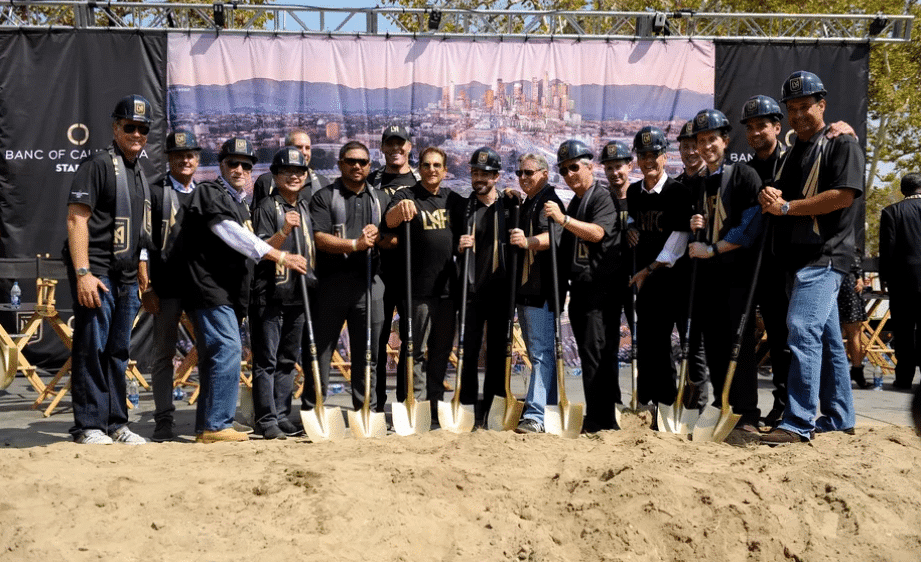
The first public event at the stadium was an open practice and dedication ceremony held on April 18, 2018. The club’s first home match was played on April 29, 2018, against Seattle Sounders FC, with the home side winning 1–0. The lone goal was scored by Laurent Ciman in stoppage time in front of a capacity crowd of 22,000.
Banc of California Stadium City Description
Los Angeles, officially the City of Los Angeles and often known by its initials L.A., is the largest city in California. With an estimated population of nearly four million people, it is the second-most populous city in the United States (after New York City) and the third-most populous city in North America (after Mexico City and New York City). Los Angeles is known for its Mediterranean climate, ethnic diversity, Hollywood entertainment industry, and its sprawling metropolis.

Los Angeles lies in a basin in Southern California, adjacent to the Pacific Ocean, with mountains as high as 10,000 feet (3,000 m), and deserts. The city, which covers about 469 square miles (1,210 km2), is the seat of Los Angeles County, the most populous county in the United States. The Los Angeles metropolitan area (MSA) is home to 13.1 million people, making it the second-largest metropolitan area in the nation after New York. Greater Los Angeles includes metro Los Angeles as well as the Inland Empire and Ventura County. It is the second-most populous U.S. combined statistical area, also after New York, with a 2015 estimate of 18.7 million people.
Home to the Chumash and Tongva, the area that became Los Angeles was claimed by Juan Rodríguez Cabrillo for Spain in 1542. The city was founded on September 4, 1781, under Spanish governor Felipe de Neve, in the village of Yaanga. It became a part of Mexico in 1821 following the Mexican War of Independence. In 1848, at the end of the Mexican–American War, Los Angeles and the rest of California were purchased as part of the Treaty of Guadalupe Hidalgo, and thus became part of the United States. Los Angeles was incorporated as a municipality on April 4, 1850, five months before California achieved statehood. The discovery of oil in the 1890s brought rapid growth to the city. The city was further expanded with the completion of the Los Angeles Aqueduct in 1913, which delivers water from Eastern California.
Los Angeles has a diverse economy and hosts businesses in a broad range of professional and cultural fields. It also has the busiest container port in the Americas. The Los Angeles metropolitan area also has a gross metropolitan product of $1.0 trillion (as of 2017), making it the third-largest city by GDP in the world, after the Tokyo and New York City metropolitan areas. Los Angeles hosted the 1932 and 1984 Summer Olympics and will host the 2028 Summer Olympics.
Geography
The city of Los Angeles covers a total area of 502.7 square miles (1,302 km2), comprising 468.7 square miles (1,214 km2) of land and 34.0 square miles (88 km2) of water. The city extends for 44 miles (71 km) north-south and for 29 miles (47 km) east-west. The perimeter of the city is 342 miles (550 km).

Los Angeles is both flat and hilly. The highest point in the city proper is Mount Lukens at 5,074 ft (1,547 m), located at the northeastern end of the San Fernando Valley. The eastern end of the Santa Monica Mountains stretches from Downtown to the Pacific Ocean and separates the Los Angeles Basin from the San Fernando Valley. Other hilly parts of Los Angeles include the Mt. Washington area north of Downtown, eastern parts such as Boyle Heights, the Crenshaw district around the Baldwin Hills, and the San Pedro district.
Banc of California Stadium Weather
Los Angeles has a Mediterranean climate (Köppen Csb on the coast and most of downtown, Csa near the metropolitan region to the west), and receives just enough annual precipitation to avoid a semi-arid climate (BSh),. Daytime temperatures are generally temperate all year round. In winter, they average around 68 °F (20 °C) giving it a tropical feel although it is a few degrees too cool to be a true tropical climate on average due to cool night temperatures. Los Angeles has plenty of sunshine throughout the year, with an average of only 35 days with measurable precipitation annually.
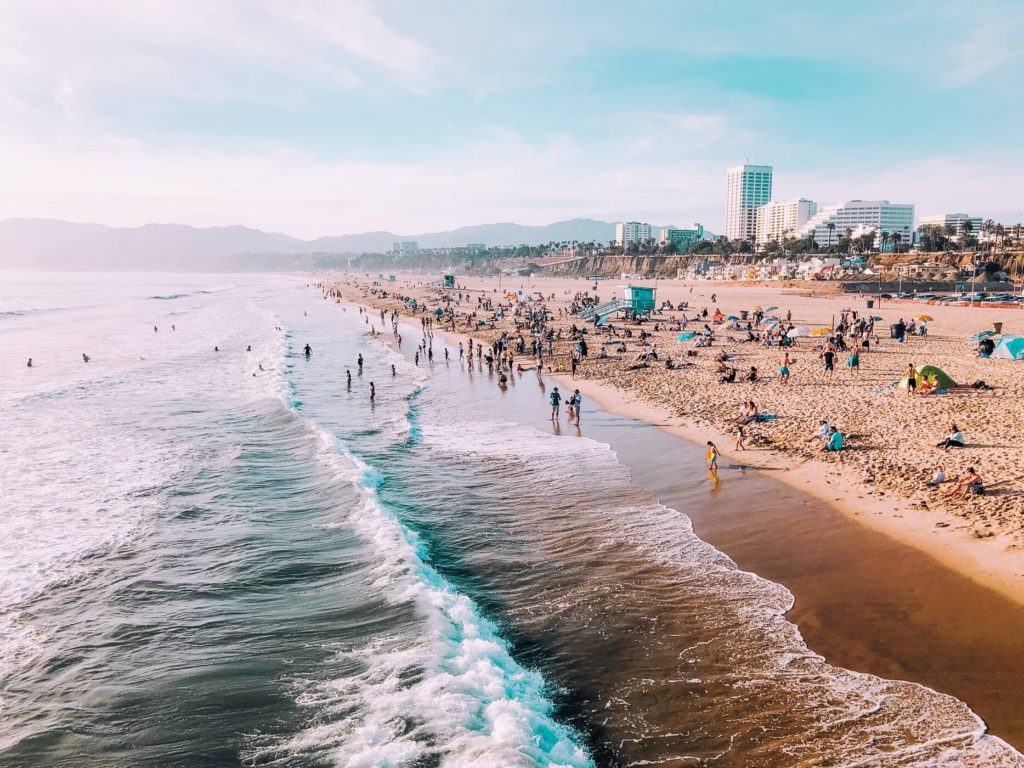
Temperatures in the coastal basin exceed 90 °F (32 °C) on a dozen or so days in the year, from one day a month in April, May, June, and November to three days a month in July, August, and October and to five days in September. Temperatures in the San Fernando and San Gabriel Valleys are considerably warmer. Temperatures are subject to substantial daily swings; in inland areas, the difference between the average daily low and the average daily high is over 30 °F (17 °C).[84] The average annual temperature of the sea is 63 °F (17 °C), from 58 °F (14 °C) in January to 68 °F (20 °C) in August. Hours of sunshine total more than 3,000 per year, from an average of 7 hours of sunshine per day in December to an average of 12 in July.
Banc of California Stadium Surroundings
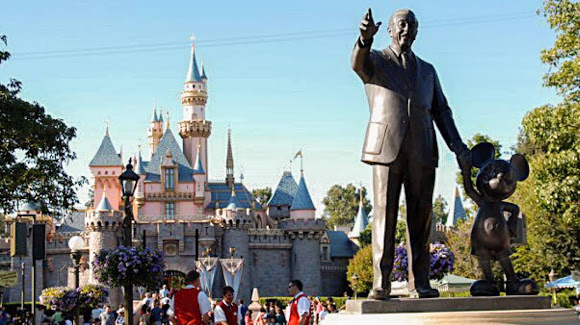
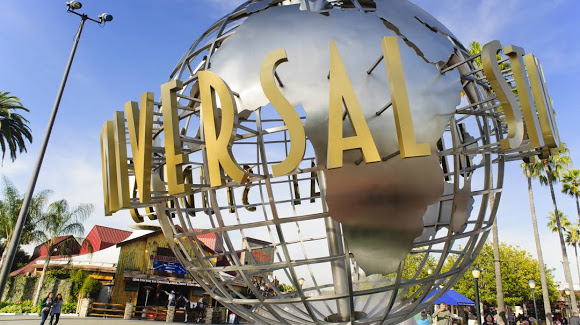
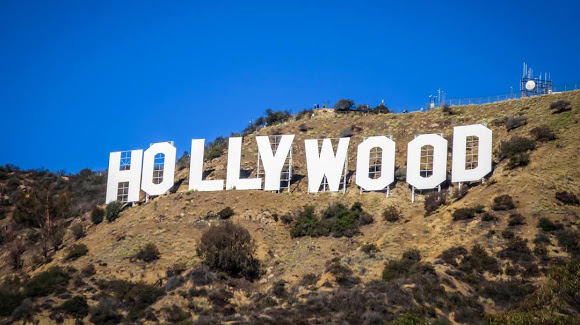
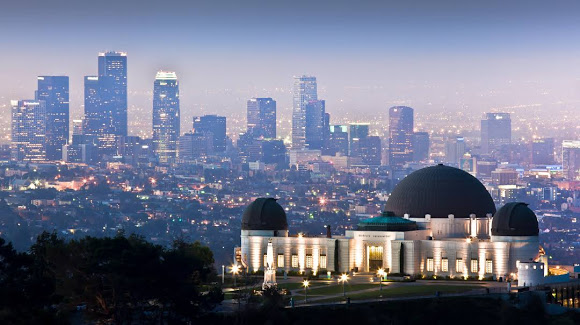
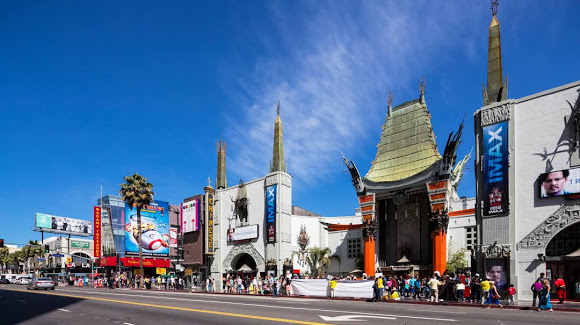
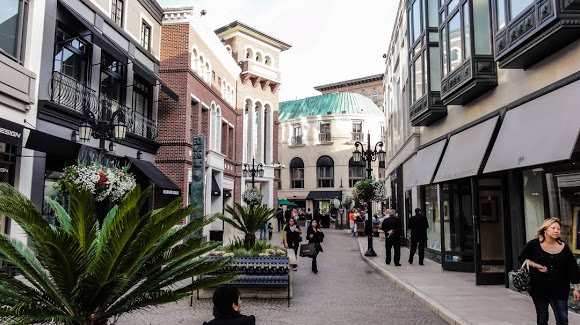
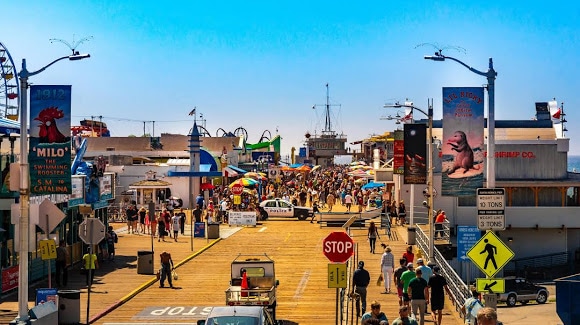
How to get to Banc of California Stadium
Located in historic Exposition Park, Banc of California Stadium is conveniently located near the convergence of the 110 and 10 Freeways and accessible via the Metro Expo line.
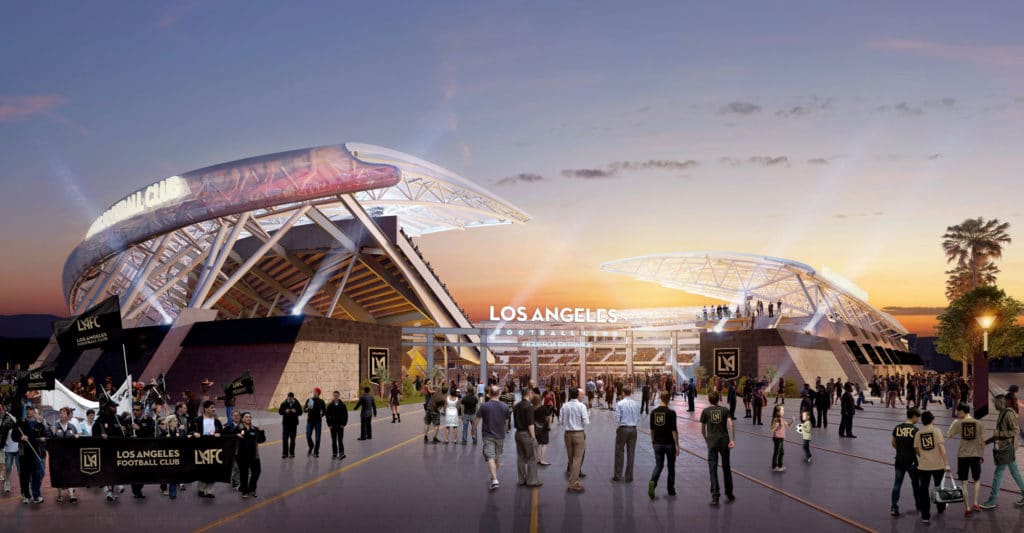
The address for Banc of California Stadium is
3939 S FIGUEROA ST
LOS ANGELES, CA 90037
Banc of California Stadium DRIVING DIRECTIONS
It’s only one block from the 110 freeway, with easy access to all major freeways with over 4,800 parking spaces on-site within Expo Park and adjacent lots. The Expo Park/USC Station Metro train stop connects Banc of California Stadium to Southern California.
FROM I-110 (NORTHBOUND) to Banc of California Stadium
Take the 110 Freeway North to Exit 20A, Martin Luther King Jr. Blvd. Turn left onto MLK and go straight. Turn right on Hoover and enter the Gold Lot just past Green Lot (formerly Lot 6).
FROM I-110 (SOUTHBOUND) to Banc of California Stadium
Take the I-110 Freeway South to Exit 20A, Exposition Blvd. Merge onto Flower St. or take a right on Exposition Blvd. and Figueroa St. for lower-priced parking options.
FROM I-10 (EASTBOUND) to Banc of California Stadium
Take I-10 East to Exit 12, Vermont St. Turn right on Vermont St. Turn left on Exposition Blvd. Then take a right onto Figueroa Blvd. Banc of California Stadium will be on your right.
RIDESHARE
LAFC has partnered with Uber as our official ride-share partner. An enhanced Uber pick-up and drop-off designated location will be available for fans on matchdays, located right outside the Southeast Entrance in the Green Lot (formerly Lot 6).
All ride-share, access, and drop-off vehicles are welcome in parking Lot 6. Please enter Lot 6 from Figueroa for easy drop-off and pick-up access. Patrons may meet their vehicle at the top of the Lot 6 designated area once they have ordered their ride, and then exit quickly from there.
PUBLIC TRANSPORTATION – METRO
The Banc of California Stadium is easily accessible using the Metro Expo Line at the Expo Park/USC Station.
From the Expo Park/USC station, walk along Kinsey Drive or Victory Walk to South Coliseum Drive towards Banc of California Stadium.
The Metro Expo Line can be easily accessed with connections at the 7th Street/Metro Center in downtown Los Angeles to the Metro Red/Purple lines, and at the Pico Station to the Metro Blue line. Fans using the Metro Gold Line can make an easy transfer at Union station to the Metro Red/Purple lines for a connection to the Expo Line.
It is recommended to purchase a round-trip fare at the beginning of trips to avoid lines when the games are over. Each person, including children over the age of 5, must have a valid TAP card and remember to tap before each boarding.
Banc of California Stadium Parking
Parking at Expo Park is limited; plan to arrive early.
Banc of California Stadium PINK, YELLOW, GREEN LOTS (FORMERLY LOTS 4, 5, 6)
From I-110 (northbound): Take the 110 Freeway North to Exit 20A, Martin Luther King Jr. Blvd. Turn left onto MLK and go straight. There are 2 entrances, one in the middle of Green Lot (formerly Lot 6) and one at MLK and Hoover.
From the I-110 (southbound): Take the 110 Freeway South to Exit 20A, Martin Luther King Jr. Blvd. Turn right onto MLK and go straight. There are 2 entrances, one in the middle of Green Lot (formerly Lot 6) and one at MLK and Hoover.
From the I-10 (eastbound): Take I-10 East to Exit 12 Vermont St. Take a right on Vermont St. down to Martin Luther King Jr. Blvd and take a left. Enter Pink, Yellow, or Green Lots (formerly Lots 4, 5, 6).
Banc of California Stadium USC MCARTHY WAY AND FIGUEROA LOTS (CASH AND CREDIT)
From the I-110 (soutbound): Take I-110 South and take exit 20B onto Exposition Blvd. Take a right onto Exposition Blvd. Then take a right onto Figueroa Blvd. McArthy Way Lot will be on the left and the Figueroa Lot will be on the right.
From the I-110 (northbound): Take I-110 North and take exit 20B onto Exposition Blvd. Take a left onto Exposition Blvd. Then take a right onto Figueroa Blvd. McArthy Way Lot will be on the left and the Figueroa Lot will be on the right.
Banc of California Stadium USC FLOWER ST. LOT (CASH AND CREDIT)
From the I-110 (soutbound): Take I-110 South and take exit 20B onto Exposition Blvd. Go straight through Exposition Blvd on Flower and Flower St. Lot parking is on the right.
From the I-110 (northbound): Take I-110 North and take exit 20B onto Exposition Blvd. Take a left onto Exposition Blvd and then a left on Flower St. and Flower St. Lot parking is on the right.
BICYCLE PARKING
There are over 100 bicycle racks around Banc of California Stadium.
Banc of California Stadium Tickets
Click here to purchase tickets through LA FC’s official website.








